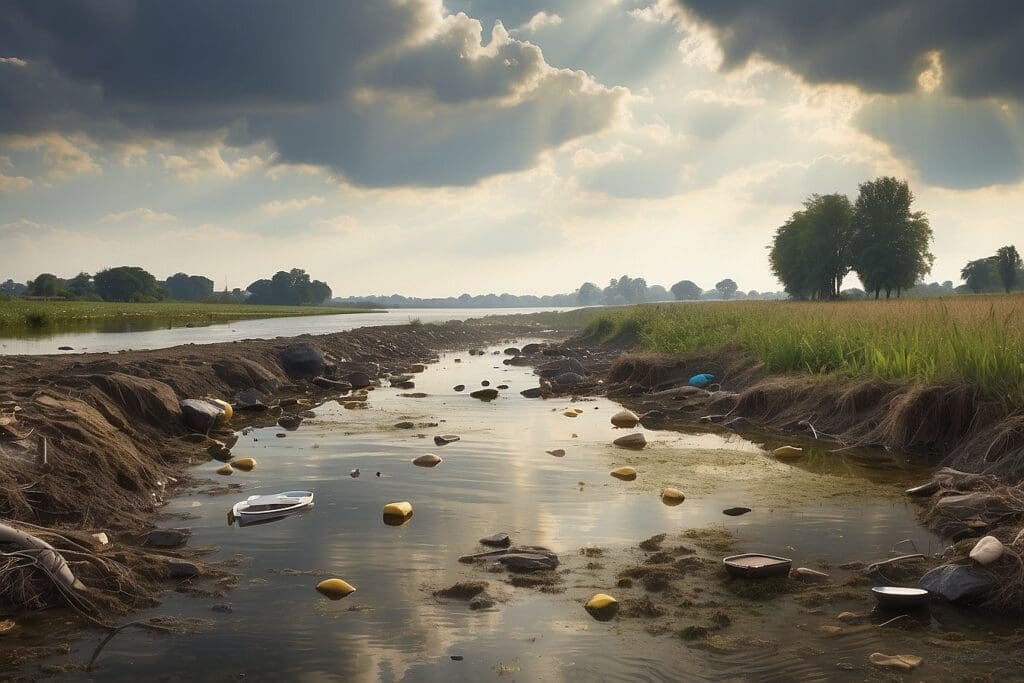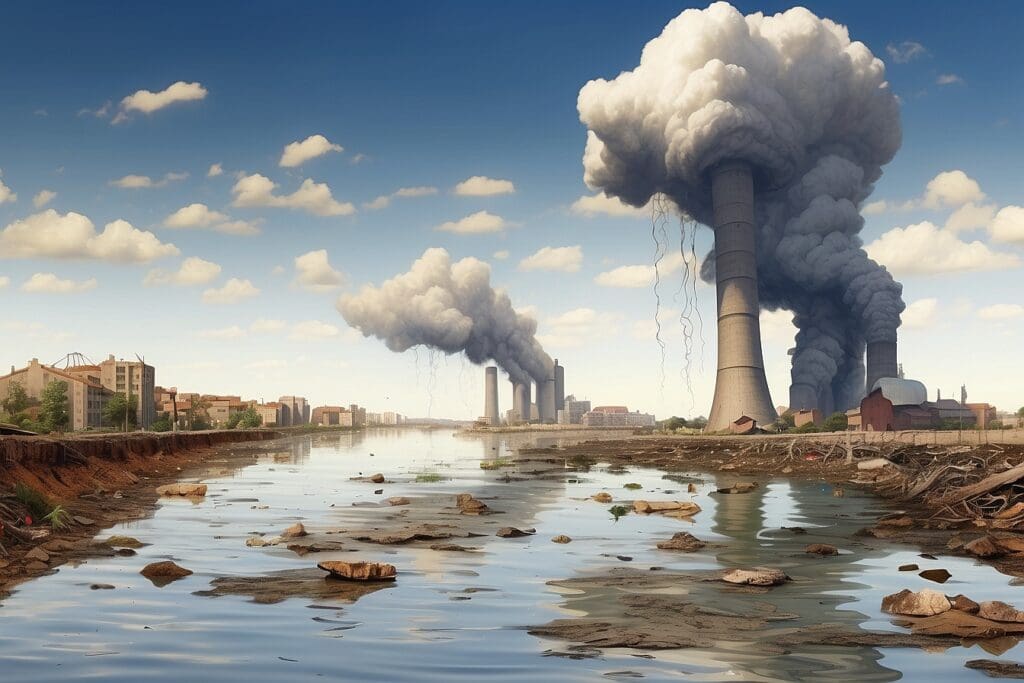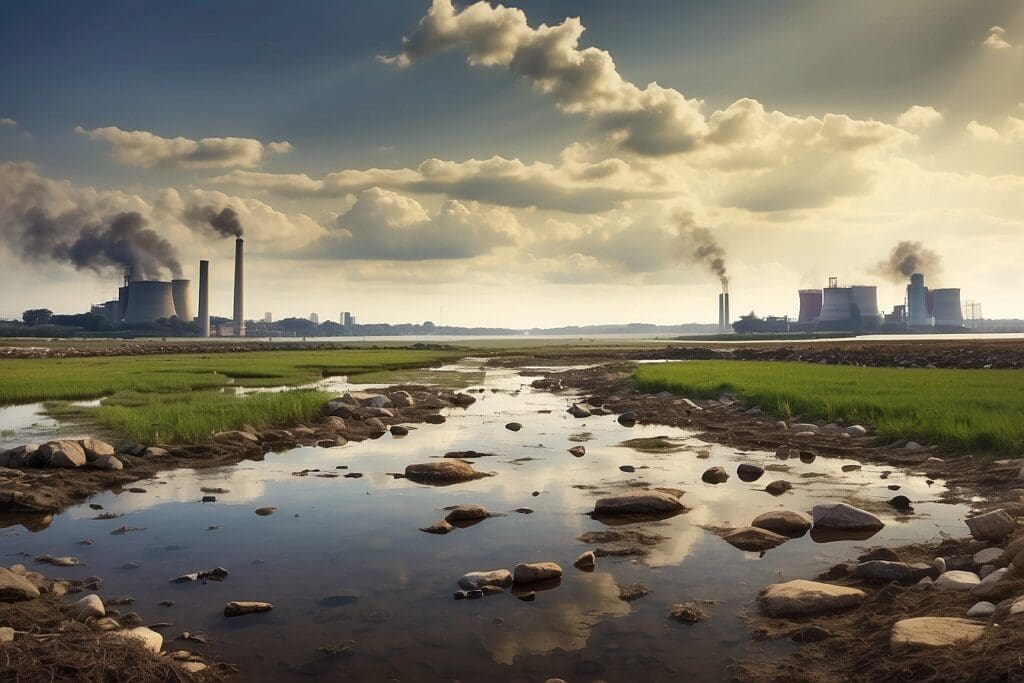In an environment primarily driven by anthropogenic activities, it is of no surprise that human nature’s exploitative proclivities manifest in our oceans, lakes, and rivers. On a planet where water makes up approximately 70 percent of its 510-million-square-kilometer surface, it is hard to imagine that us measly humans could really have a significant impact.1;2 To the contrary, we are the single most formidable threat to Mother Earth’s waterways. Scientists and environmentalists alike have made clear to the public that the phenomenon of events that continue to destroy delicate ecosystems.
Ocean Acidification in the Great Barrier Reef
Australia’s Great Barrier Reef is one such example of a quickly diminishing ecosystem. Spanning 2,100 km (13,040 miles), the Great Barrier Reef is to date the largest coral reef system in the world and harbors a myriad of unique marine organisms.4 However, over the past two decades, the previously robust coral reef has experienced a 13 percent decline in growth.5 How is this so, you ask? Well, unbeknownst to many is “the other carbon dioxide (CO2) problem” more commonly known as. Yes, you read correctly. Increasing carbon dioxide levels do not affect only the atmosphere. In fact, greater than 25 percent of atmospheric CO2 is absorbed by oceans, which then undergoes a chemical reaction that decreases the ocean’s calcium carbonate concentrations—necessary for the formation of shells and skeletons of corals and other sea organisms—and instead increases concentrations of carbonic acid. The increase in carbonic acid has made it difficult for these sea creatures to build shells in the first place, let alone to keep them from breaking down.6
Ocean acidification has tremendous impacts on today’s existing coral colonies that have, since 1990, “been extending and thickening by less and less each year,” says marine biologist Glenn De’ath of the Australian Institute of Marine Science.7 If we can maintain CO2 levels at 450 ppm, only 8 percent of the world’s coral reefs will stand a chance. Only 8 percent! To put this into greater perspective, coral reefs provide habitat for approximately a quarter of all marine species.8 Thus, as corals are struggling to acclimate to record increases in CO2, marine organisms that depend on these coral systems for food and shelter are also affected, many of which face extinction with disappearing reefs.

To make matters worse, the Great Barrier Reef waters are “0.4ºC warmer than they were 30 years ago.”9 Again, effects of warming are not terrestrially confined. Water temperature is critical for the survival, growth, and reproduction of aquatic species.10 Not surprisingly, symbiotic relationships between coral reefs and dinoflagellates—single-celled organisms that photosynthesize and provide food to corals—have been stressed as dinoflagellates are pushed above their thermal tolerance.11;12 This leads to a phenomenon known as the dinoflagellates leave the coral systems, leaving behind translucent, colorless corals. As these coral reef systems continue to decline in vigor, many marine ecosystems will experience changes in composition. Furthermore, effects are also projected to extend to local economies and livelihoods. On a global level, approximately 500 million people rely on coral reefs for their daily food and income.13 The Great Barrier Reef alone “generates over 6.5 billion dollars in tourism revenue and 63,000 jobs.”14
The Gulf of Mexico is home to a wide range of seabirds, sea turtles, marine mammals, and more. Seabirds were most visibly affected as their feathers were doused in crude, which greatly hindered their ability to swim and fly.19 In the first year alone, the oil killed approximately 6,147 birds. Furthermore, the Kemp’s ridleys sea turtles were the hardest-hit of five species of sea turtles, as 809 strandings were recorded within a year of the spill. Many fish species were reported to have “open sores, strange black streaks and other deformities.”20 Lastly, of the 1,100 miles of shoreline oiled by the spill, coastal wetlands are “virtually impossible” to clean up, says the National Wildlife Federation. Clean up would involve destroying and uprooting vegetation, which would then increase vulnerability to already affecting major coastal communities, contributing to erosion is not particularly palatable as a means to clean up an oil spill. Furthermore, these coastal wetlands serve as a buffer against hurricanes for many of the Gulf states. Thus, loss of vegetation and increased erosion would not fare well on the coastal population.
Unfortunately, there is even more bad news—it seems as if clean up efforts are having the opposite effect. The chemical dispersant Corexit is supposed to aid in the emulsification, or the breakdown, of oil into minute droplets, thus facilitating the sinking of oil particles.22 Many environmentalists, however, decried the deployment of Corexit as it alone is toxic to marine mammals and when combined with oil further exacerbates the contamination of marine life. Many sea creatures have suffered from lesions and deformities, including shrimp with no eyes and crabs without eyes or claws.23;24 Furthermore, “massive die-offs” of base-of-the-food-chain organisms are directly related to the dispersion of Corexit. Lastly, Gulf residents have experienced frightening health impacts, such as: “bleeding from the nose, ears, breasts, and even anus.” Some individuals have complained of cognitive damage such as temporarily being unable to move or speak while still being able to hear.”25 Pretty scary stuff and the future effects are still unknown.
Eutrophication in the Baltic Sea

The largest issue being dealt with in the Baltic Sea is eutrophication. Sources of eutrophication specific to the Baltic Sea include nutrient runoff from an established agricultural industry, nitrous gasses from energy production and transport, and sewage.27 The Baltic Sea is particularly sensitive to eutrophication because of its unique geography of being nearly land-locked. It does not receive a regular inflow of seawater, thus, impediments in community development, and “a loss of functionally important species.”29
As it has been made clear, our global water bodies, from the United States to Australia to Scandinavia, are all suffering from very real and sometimes irreversible water pollution events. Ocean acidification, oil spills, and eutrophication, inter alia, have plagued major international waterways impacting both and humans alike. With this information in mind, it is important to demand change both at the individual and government level. Without such steadfast action, our oceans and rivers will continue to suffer, soon to bear very minimal life.





